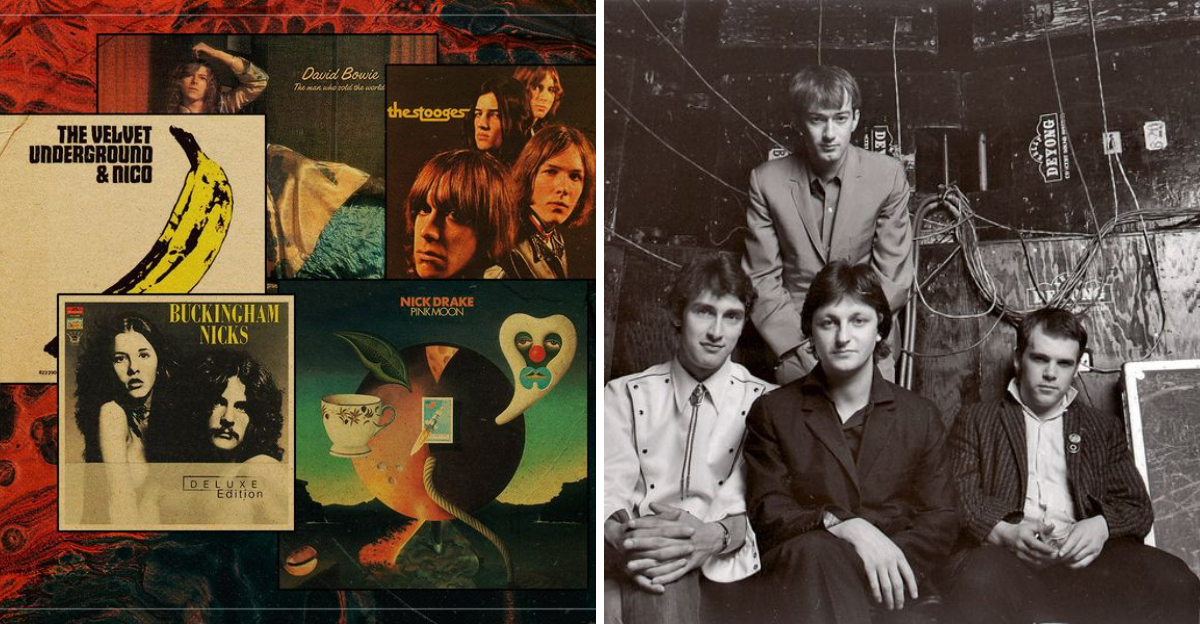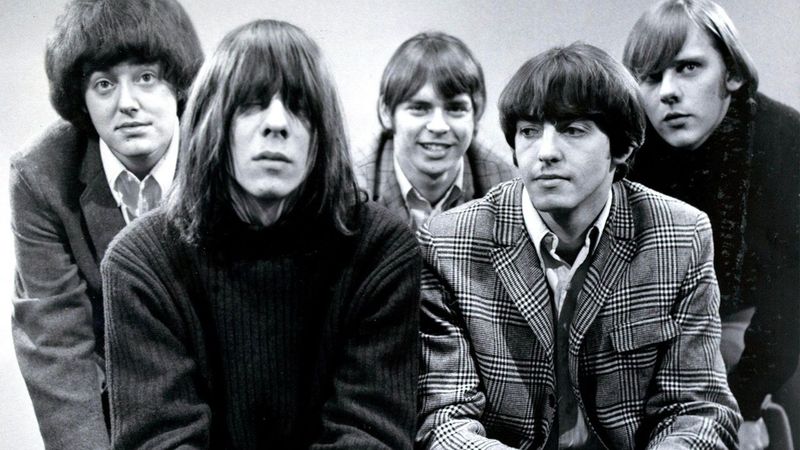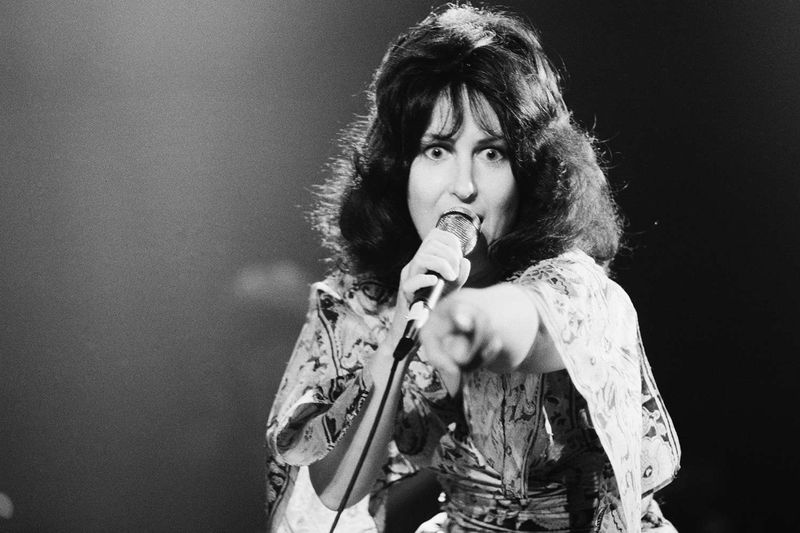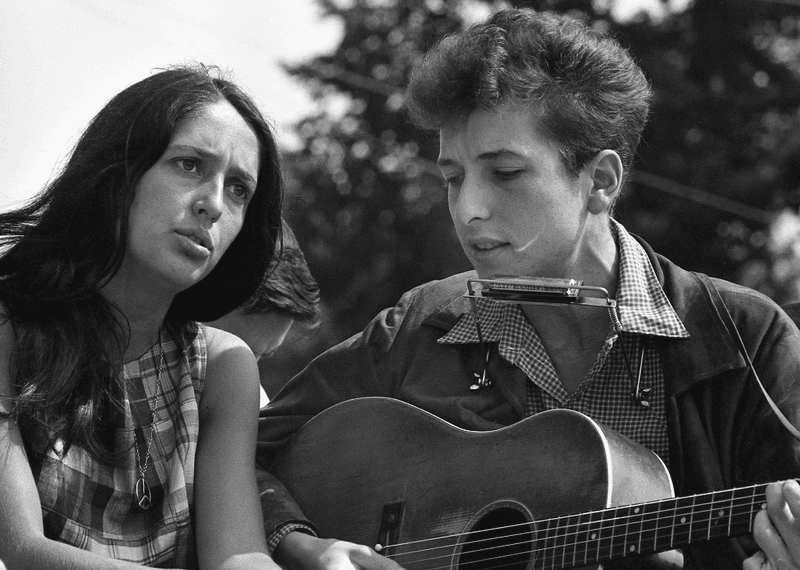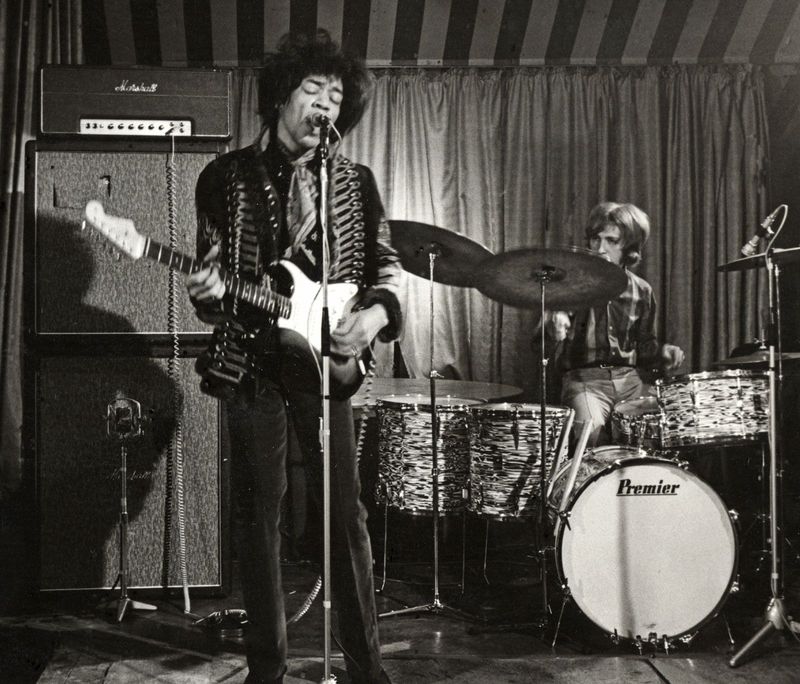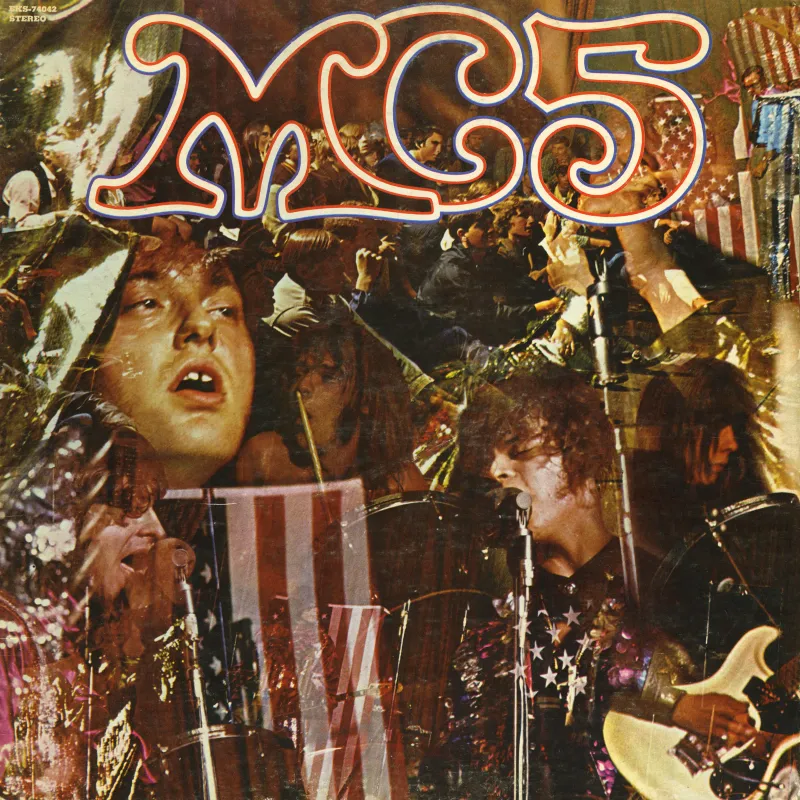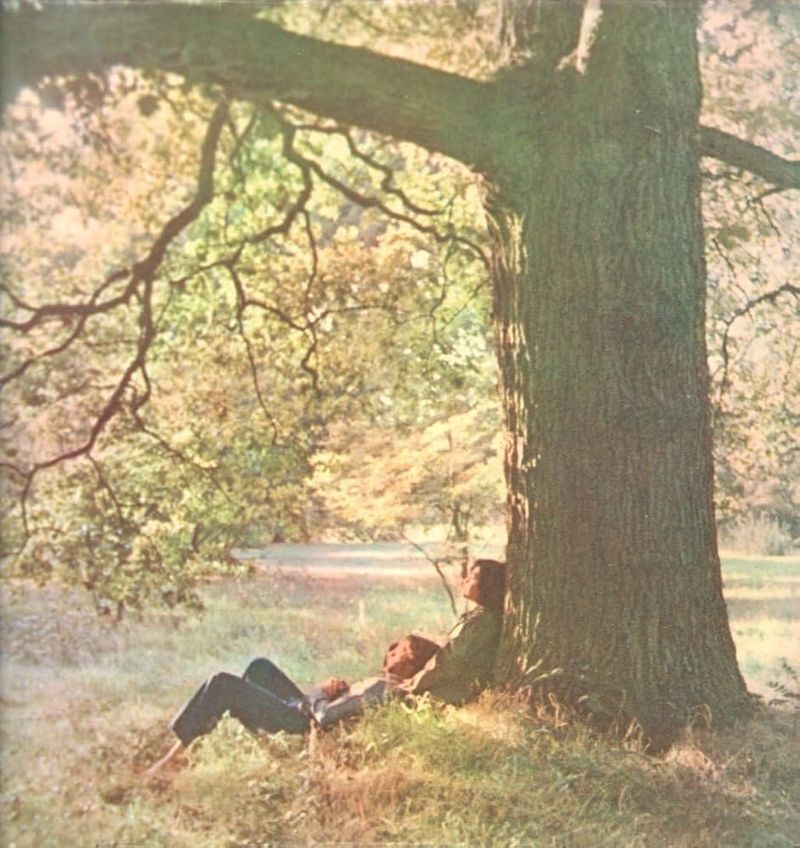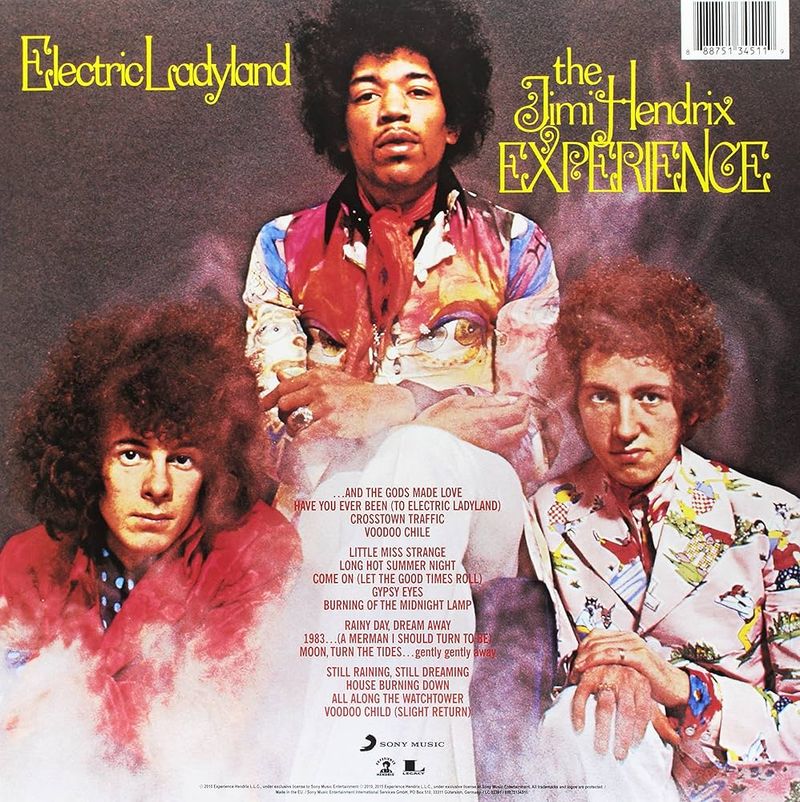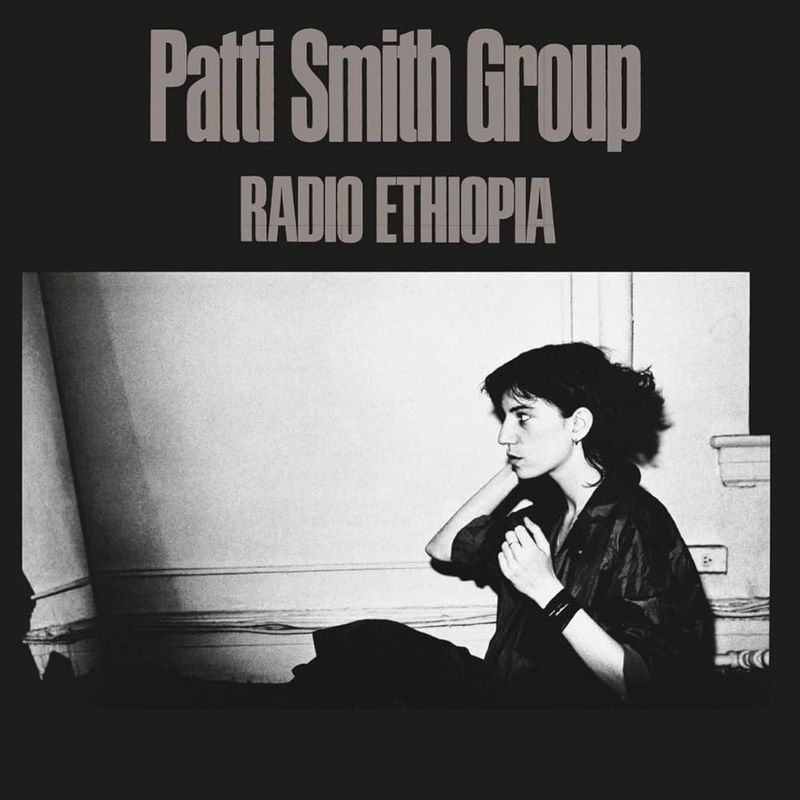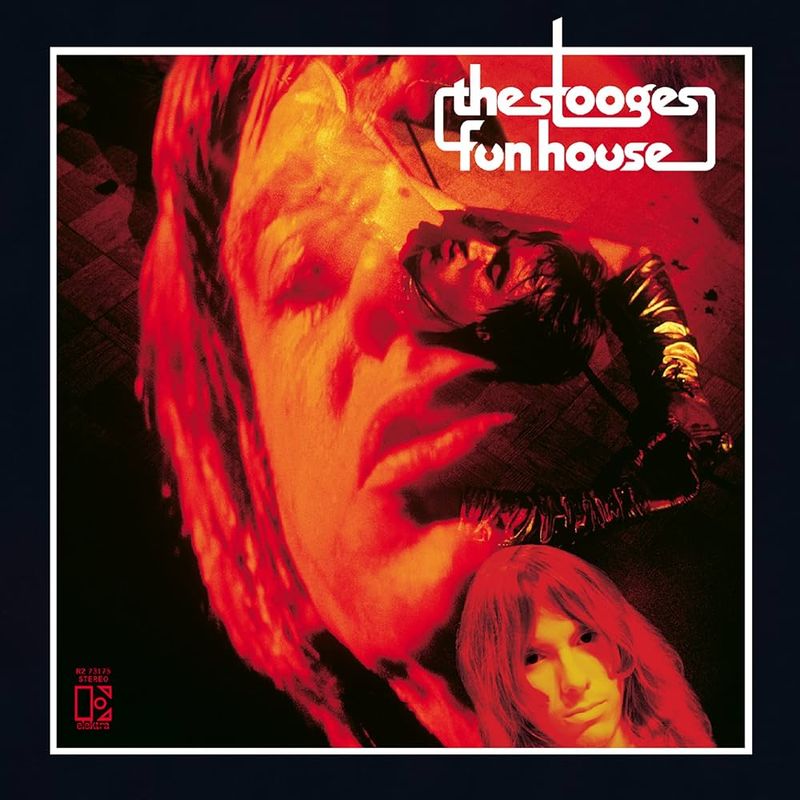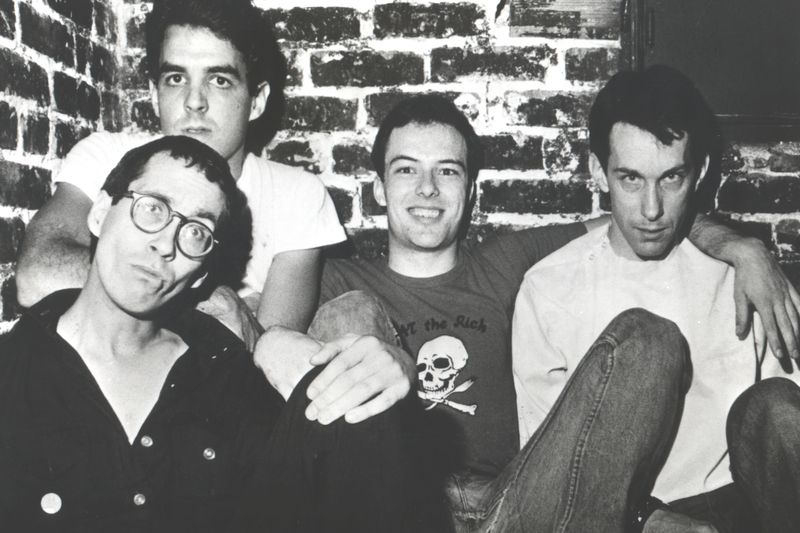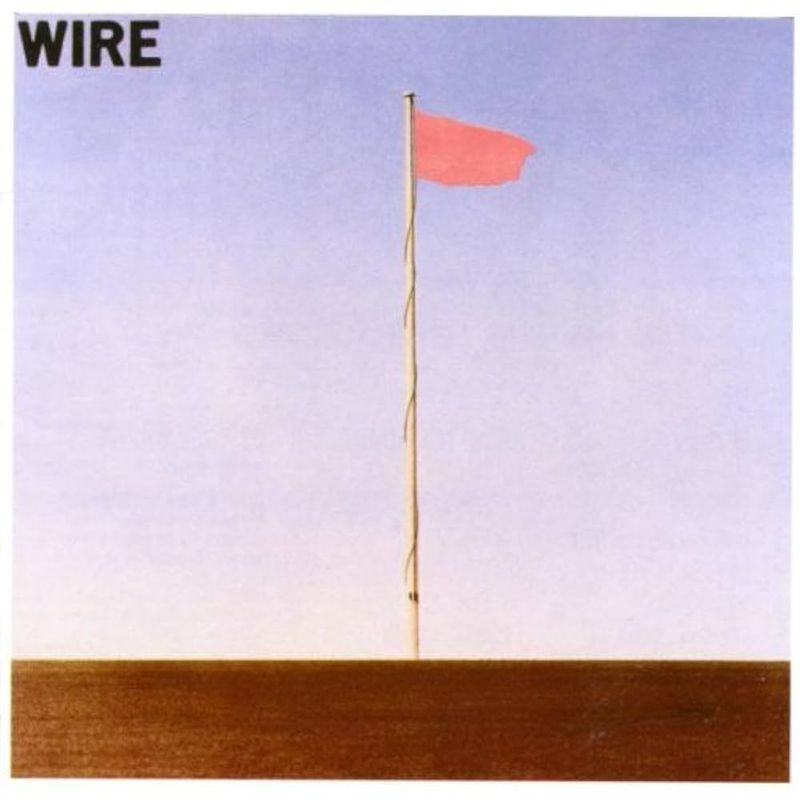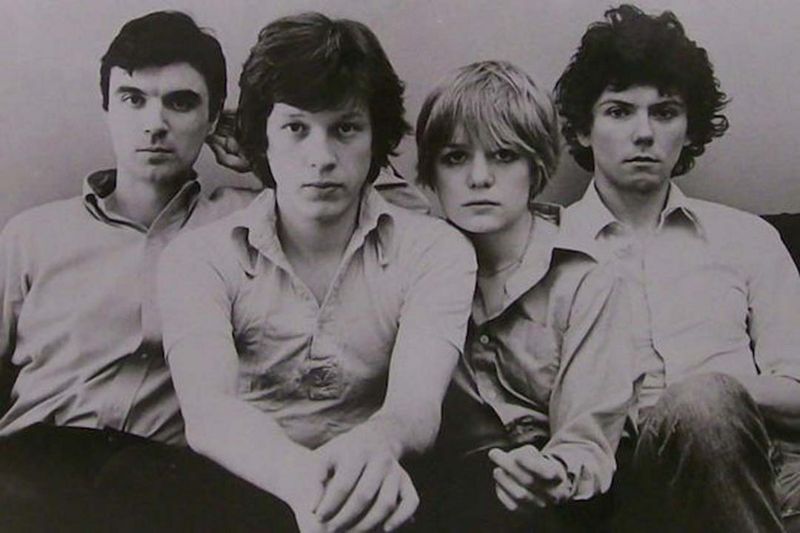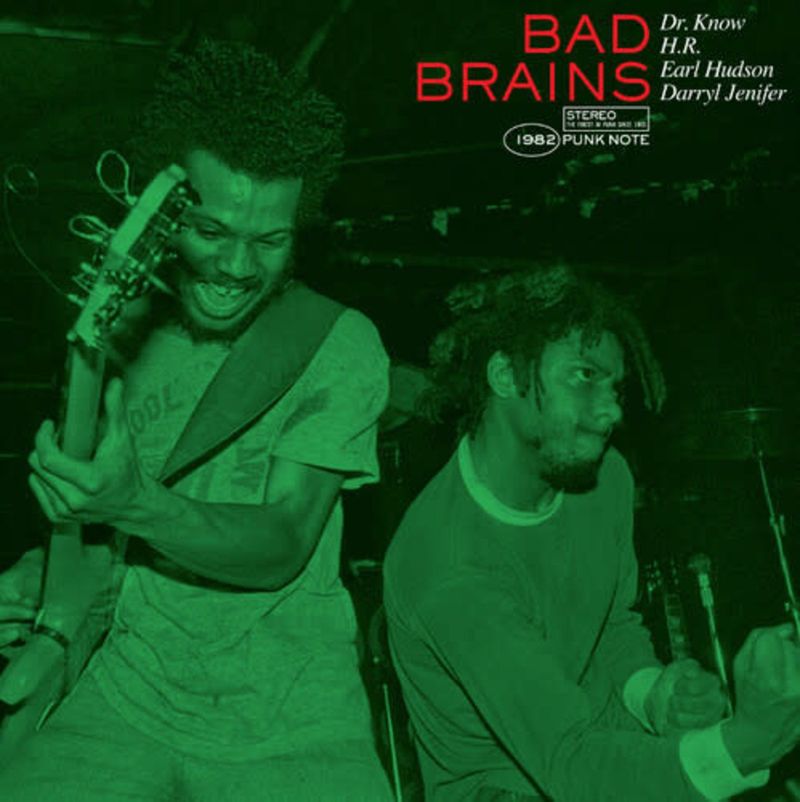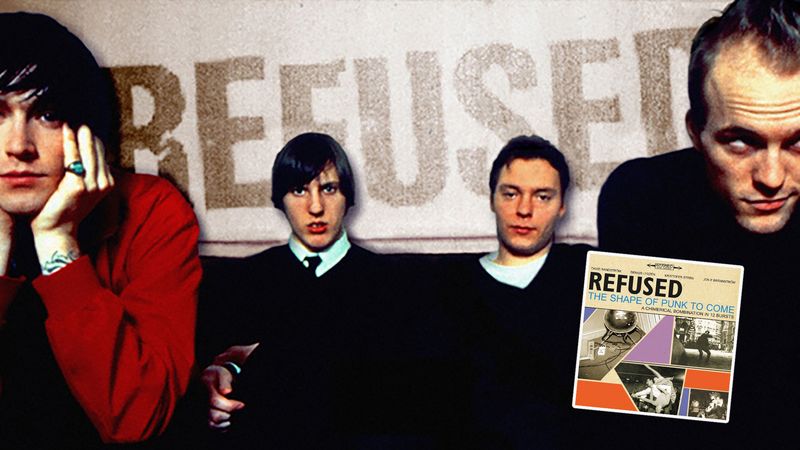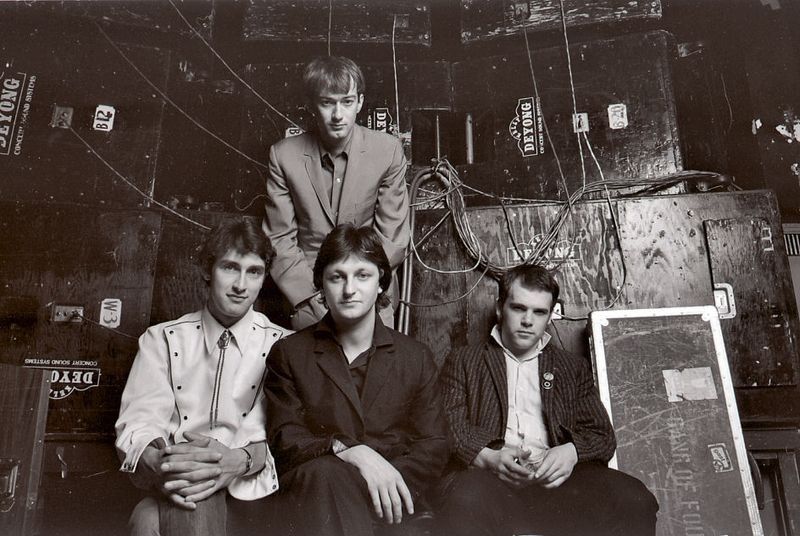Rock music changed the world, but many myths still cloud its revolutionary history.
From who invented it to which albums truly shaped music forever, our understanding often falls short.
Let’s bust some common myths about rock’s evolution and spotlight albums that deserve more recognition for their boundary-pushing impact.
1. Rock Was Invented by White Musicians
Black artists pioneered rock’s rebellious sound long before it hit mainstream America. Chuck Berry’s electric guitar licks, Sister Rosetta Tharpe’s innovative playing techniques, and Little Richard’s explosive performances laid the foundation for everything that followed.
Even Elvis Presley acknowledged this truth, famously stating, “I just added a beat to what they were already doing.” The erasure of these foundational Black artists represents one of music history’s greatest injustices.
When examining rock’s origins, the trail always leads back to Black rhythm and blues musicians who created the blueprint that white artists later popularized and profited from.
2. The Beatles Were the First to Get Experimental
Musical experimentation flourished well before The Beatles donned their colorful Sgt. Pepper uniforms. Brian Wilson’s meticulous work on The Beach Boys’ Pet Sounds (1966) pushed studio boundaries with unconventional instruments and complex harmonies that directly influenced The Beatles.
Meanwhile, The Velvet Underground incorporated avant-garde elements, feedback experiments, and taboo lyrical themes that redefined what rock could express. Their groundbreaking approach predated the mainstream acceptance of experimental techniques.
The true innovation timeline shows The Beatles as brilliant adopters rather than sole inventors, building upon experimental foundations others had already established in rock’s evolving landscape.
3. Punk Rock Was a 1970s U.K. Thing
Years before safety pins and mohawks hit London, Detroit’s music scene was breeding raw, aggressive proto-punk. MC5’s revolutionary politics and high-energy performances at the Grande Ballroom challenged musical and social norms as early as 1967.
Alongside them, Iggy Pop and The Stooges delivered primitive, chaotic performances that rejected musical proficiency in favor of pure expression and confrontation. Their 1969 debut album featured the anarchic energy that would later define punk.
These American pioneers created the punk blueprint – stripped-down, anti-establishment music with attitude – long before the Sex Pistols or The Clash brought punk to global attention.
4. Women Came Late to Rock
Female rock pioneers smashed barriers from rock’s earliest days, despite being erased from many historical accounts. Grace Slick’s powerful vocals with Jefferson Airplane delivered counterculture anthems while Janis Joplin’s raw emotional performances redefined what a rock vocalist could be.
Patti Smith emerged as punk’s poet laureate in the mid-70s, while the all-female band Fanny earned praise from David Bowie, who called them “one of the most important female bands in American rock.” Their technical prowess challenged gender stereotypes in music.
Women weren’t latecomers – they were foundational figures whose contributions were systematically downplayed in rock’s male-dominated narrative.
5. Rock Wasn’t Political Until Vietnam
Political messaging pulsed through rock’s veins long before Vietnam War protests. Woody Guthrie’s folk-rock hybrid confronted fascism and championed workers’ rights in the 1940s, with “This Machine Kills Fascists” famously emblazoned on his guitar.
Early Bob Dylan merged traditional folk with rock elements to create anthems like “Blowin’ in the Wind” (1962) and “The Times They Are a-Changin'” (1964). Nina Simone’s powerful rock-infused soul directly addressed civil rights struggles years before Vietnam dominated headlines.
Rock music has always been intertwined with social movements and political resistance, serving as a vehicle for protest from its earliest incarnations, not just during the late 1960s.
6. Only the Lyrics Mattered
Revolutionary rock transcended lyrical messaging through sonic innovation that was equally political. Jimi Hendrix’s manipulation of feedback and distortion wasn’t just technical wizardry – it represented freedom from conventional boundaries and reflected the era’s social upheaval.
Pink Floyd’s experiments with stereo panning, tape loops, and synthesizers created immersive soundscapes that challenged how music could be experienced. The fuzz pedal, wah-wah, and other effects became tools for expressing rebellion through pure sound.
These sonic experiments weren’t mere decoration for meaningful lyrics – they were revolutionary statements themselves, breaking down established rules about what music should sound like, just as counterculture challenged social norms.
7. The Most Famous Albums Were the Most Important
Commercial success often masks rock’s true revolutionary moments. Many groundbreaking albums barely registered on charts when released but planted seeds that flourished decades later.
The Stooges’ “Fun House” sold poorly in 1970 but provided the blueprint for punk and alternative rock. Likewise, The Velvet Underground’s debut album initially flopped commercially while fundamentally altering rock’s artistic possibilities for generations.
True musical revolutions frequently happen on the margins, away from mainstream attention. Albums that quietly challenge conventions often exert greater long-term influence than those topping charts, as their innovations gradually filter into wider musical consciousness.
8. There’s a Riot Goin’ On – Sly and the Family Stone (1971)
Sly Stone’s masterpiece arrived as a dark counterpoint to the band’s earlier optimistic funk. Gone were the bright horns and uplifting messages, replaced by murky production, drum machines, and lyrics dripping with disillusionment.
The album captured the exact moment when 1960s idealism crashed into 1970s reality. Stone recorded much of it alone while battling addiction, creating dense, claustrophobic grooves that reflected societal breakdown and personal struggle.
Its innovative use of drum machines and synthesizers, plus its unflinching examination of racial politics, makes it more than a great album – it’s a historical document of post-civil rights America finding its uneasy groove.
9. Maggot Brain – Funkadelic (1971)
Eddie Hazel’s ten-minute guitar solo on the title track alone secures this album’s revolutionary status. As legend has it, George Clinton told Hazel to play as if he’d just learned his mother died, then to play as if she wasn’t dead after all.
The result transcends typical guitar heroics, becoming a raw emotional journey through grief, rage, and transcendence. Beyond that iconic track, the album merges psychedelic rock with funk grooves and politically charged lyrics addressing racial inequality and environmental concerns.
Maggot Brain demonstrated how Black musicians could claim psychedelic spaces while maintaining funk’s rhythmic foundations, creating a template for future genre-blending from Prince to OutKast.
10. Kick Out the Jams – MC5 (1969)
Recorded live at Detroit’s Grande Ballroom, this incendiary debut captured MC5’s revolutionary fervor in its natural habitat. The album opens with vocalist Rob Tyner’s infamous rallying cry: “Brothers and sisters, the time has come for each and every one of you to decide whether you are gonna be the problem or the solution!”
Their connection to radical political group the White Panther Party wasn’t just talk – their music embodied revolutionary principles through sheer volume and intensity. The band combined free jazz influences with proto-punk aggression years before punk existed as a concept.
This raw, unpolished document of musical rebellion established Detroit as ground zero for high-energy rock that prioritized message and feeling over technical perfection.
11. The Velvet Underground & Nico – The Velvet Underground (1967)
While the Summer of Love blossomed in San Francisco, this Andy Warhol-produced album explored New York’s artistic underworld with unflinching honesty. Lou Reed’s matter-of-fact lyrics about drug addiction, sexual deviance, and urban alienation shattered rock’s remaining innocence.
John Cale’s avant-garde viola techniques and Sterling Morrison’s textural guitar work created soundscapes that alternated between gentle beauty and deliberate harshness. Nico’s haunting vocals on tracks like “Femme Fatale” added European art-house sensibility to American rock.
Brian Eno famously noted that while few people bought it initially, “everyone who did formed a band.” Its influence spans from punk to indie rock to experimental music.
12. Plastic Ono Band – John Lennon (1970)
After The Beatles’ dissolution, Lennon created this stark, confessional album while undergoing primal therapy. The result stripped away production flourishes in favor of raw emotional honesty about childhood trauma, religious disillusionment, and celebrity emptiness.
“Mother” opens with primal screams addressing parental abandonment, while “God” systematically dismantles belief systems including Beatles mythology itself. Producer Phil Spector, known for his “Wall of Sound” technique, here created a deliberately sparse landscape that highlighted Lennon’s vocal vulnerability.
This revolutionary approach to personal songwriting influenced generations of artists to use music as emotional catharsis rather than mere entertainment, establishing the confessional singer-songwriter as a legitimate rock archetype.
13. Paranoid – Black Sabbath (1970)
Heavy metal found its dark soul when these Birmingham factory workers channeled industrial soundscapes into something entirely new. Tony Iommi’s down-tuned guitar (adapted after losing fingertips in a factory accident) created the ominous tone that defined metal forever after.
Beneath the heaviness lay pointed social commentary. “War Pigs” delivered scathing criticism of military-industrial complexes during Vietnam, while “Iron Man” and “Electric Funeral” painted dystopian visions reflecting environmental and nuclear anxieties.
The album’s innovation wasn’t just in volume but in its uncompromising look at societal darkness. Sabbath created musical doom as authentic response to working-class experience in a decaying industrial landscape.
14. Electric Ladyland – Jimi Hendrix (1968)
Hendrix’s magnum opus showcases a visionary artist at the peak of creative freedom. Recording in his newly built Electric Lady Studios, he expanded rock’s possibilities through unprecedented guitar techniques and innovative production approaches.
The 15-minute “Voodoo Chile” reimagines blues through psychedelic improvisation, while his transformative cover of “All Along the Watchtower” redefines interpretation itself. Throughout the double album, Hendrix explores stereo panning, backward guitar, phasing effects, and tape manipulation – techniques that revolutionized recording.
Beyond technical wizardry, Hendrix’s music embodied cultural fusion – merging Black blues traditions with psychedelic experimentation during intense racial and social upheaval, creating a sonic blueprint for liberation.
15. Radio Ethiopia – Patti Smith Group (1976)
Patti Smith’s sophomore album confused critics who expected a repeat of her acclaimed debut. Instead, she delivered a challenging, experimental record that prioritized artistic freedom over accessibility.
The title track stretches into a ten-minute improvisation combining free jazz principles with rock instrumentation and Smith’s stream-of-consciousness poetry. Producer Jack Douglas (known for Aerosmith’s commercial sound) helped create a raw, uncompromising document of artistic boundary-pushing.
Initially dismissed as difficult and unfocused, Radio Ethiopia has been reappraised as a feminist statement of artistic defiance against commercial expectations. Smith refused to be packaged as a predictable product, establishing a model for artistic integrity over market demands.
16. Fun House – The Stooges (1970)
Raw, primal energy erupts from every groove of this proto-punk masterpiece. Iggy Pop’s unhinged vocal performances channel animalistic intensity while Ron Asheton’s guitar work creates a sludgy, distorted foundation that would influence generations of noise-makers.
Recorded mostly live in the studio to capture the band’s notorious performance energy, the album progresses from straightforward rockers to the free-jazz chaos of the closing track “L.A. Blues.” Producer Don Gallucci deliberately avoided cleaning up the band’s sound, preserving its dangerous, unpolished edge.
Fun House captures the exact moment when rock’s rebellious spirit found expression through deliberate primitivism rather than technical proficiency – an approach that would define punk’s DIY ethos.
17. Fresh Fruit for Rotting Vegetables – Dead Kennedys (1980)
Reagan-era America found its sharpest critics in this San Francisco punk band. Jello Biafra’s distinctive vocal style – part sneer, part theatrical character work – delivered biting political satire targeting both conservative politics and liberal complacency.
Songs like “California Über Alles” imagined then-governor Jerry Brown as a hippie fascist, while “Holiday in Cambodia” confronted privileged Americans with global atrocities. Musically, East Bay Ray’s surf-influenced guitar brought unexpected melody to hardcore’s typically uniform assault.
The album’s DIY production and explicitly political messaging exemplified punk’s potential as a vehicle for radical critique. Its unflinching examination of American imperialism, police brutality, and consumer culture remains startlingly relevant decades later.
18. Pink Flag – Wire (1977)
Twenty-one songs in thirty-five minutes – Wire’s debut shattered punk conventions while supposedly operating within them. The British art school band stripped rock to its essential elements, then reassembled them with conceptual precision.
Songs like “Three Girl Rhumba” and “Ex Lion Tamer” often end abruptly just as they seem to begin, challenging listeners’ expectations about song structure. The minimalist approach features few guitar solos or conventional choruses, instead focusing on tightly wound rhythms and cryptic lyrics.
Pink Flag established post-punk before punk had fully arrived, influencing bands from R.E.M. to Elastica. Its intellectual approach to rock deconstruction created a template for art-punk that values ideas as much as attitude.
19. Fear of Music – Talking Heads (1979)
Modern anxiety found its perfect soundtrack in Talking Heads’ third album. David Byrne’s neurotic vocals address fear of air, animals, cities, and human connection against increasingly complex rhythmic backdrops influenced by African polyrhythms.
Producer Brian Eno helped the band expand their sound palette while maintaining the nervous energy of their CBGB origins. “Life During Wartime” imagines urban apocalypse through funk-punk fusion, while “Heaven” deconstructs paradise as “a place where nothing ever happens.”
The album’s marriage of intellectual art-rock with danceable grooves created a revolutionary template for thinking person’s dance music. Its exploration of modern alienation through global musical influences established a blueprint for generations of art-rock experimentalists.
20. Dry – PJ Harvey (1992)
Polly Jean Harvey’s explosive debut arrived like a thunderbolt in the early ’90s alternative landscape. Her raw, blues-influenced guitar playing and unfiltered vocal delivery addressed female desire, rage, and power with unprecedented directness.
Songs like “Dress” and “Sheela-Na-Gig” confronted gender expectations through visceral imagery and Harvey’s unflinching delivery. The stripped-down production by Head and Harvey herself preserved the music’s immediate impact, emphasizing the trio’s dynamic range from whisper to scream.
Harvey’s refusal to soften her artistic vision established her as a revolutionary voice in rock. Unlike many female artists, she wasn’t marketed as accessibly feminine or politically straightforward – just as a formidable, uncompromising artist.
21. Surfer Rosa – Pixies (1988)
Before Nirvana’s commercial breakthrough, Pixies had already created the quiet-loud-quiet template that would define alternative rock. Producer Steve Albini captured the band’s extreme dynamics with minimal studio interference, resulting in a sound both primal and precisely controlled.
Black Francis’s surreal lyrics about incest, mutilation, and Biblical violence collide with Kim Deal’s melodic bass lines and backing vocals. Songs shift abruptly from whispered verses to screamed choruses, creating the tension-and-release approach that countless bands would adopt.
The album’s Spanish lyrics, surf influences, and punk energy created a distinctly American alternative to British indie rock. Its raw production aesthetic established a new standard for authentic rock recording.
22. Bad Brains – Bad Brains (1982)
Four Black musicians from Washington D.C. forever changed hardcore punk’s trajectory with this explosive debut. Their unmatched technical proficiency – honed through jazz fusion training – allowed them to play hardcore faster and more precisely than any predecessors.
Tracks like “Sailin’ On” and “Pay to Cum” deliver blistering speed punctuated by H.R.’s versatile vocals, while reggae numbers like “I Luv I Jah” showcase their Rastafarian spirituality. This duality challenged punk’s nihilistic reputation by introducing positive mental attitude philosophy.
The band’s existence confronted punk’s predominantly white image while their musical virtuosity expanded its possibilities. They proved hardcore could embrace complexity and spirituality without sacrificing intensity.
23. The Shape of Punk to Come – Refused (1998)
Swedish revolutionaries Refused created the ultimate hardcore punk statement, then promptly disbanded. Their manifesto-like album incorporated electronic elements, jazz structures, and string arrangements while maintaining hardcore’s political fury and physical intensity.
“New Noise” builds from spoken word to explosive chorus, embodying their philosophy that revolutionary music requires revolutionary form. The album’s Marxist lyrical content directly addresses capitalism’s contradictions and calls for artistic resistance against commercialization.
Released as punk commercialized through pop-punk, the album represented a radical alternative path. Its intellectual ambition, technical complexity, and uncompromising politics influenced everything from post-hardcore to experimental metal, proving punk could evolve without losing its revolutionary essence.
24. Entertainment! – Gang of Four (1979)
Marxist theory never grooved so hard before Gang of Four’s debut merged funk rhythms with razor-sharp post-punk angles. Andy Gill’s jagged guitar avoids traditional rock heroics, instead functioning as percussive counterpoint to Dave Allen’s danceable bass lines.
Lyrically, the album dissects capitalism’s contradictions, sexual politics, and consumer culture with academic precision and punk directness. “Natural’s Not In It” critiques commodified leisure while “Damaged Goods” applies market terminology to romantic relationships.
The band’s analytical approach to both music and politics created a blueprint for intellectually engaged dance-punk. Their refusal to separate political content from musical form demonstrated how revolutionary ideas require revolutionary sounds.
